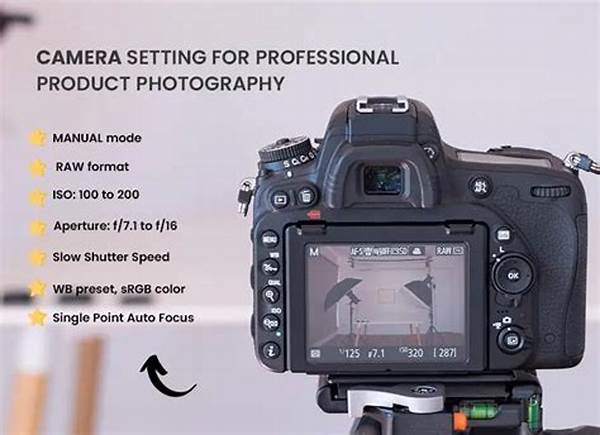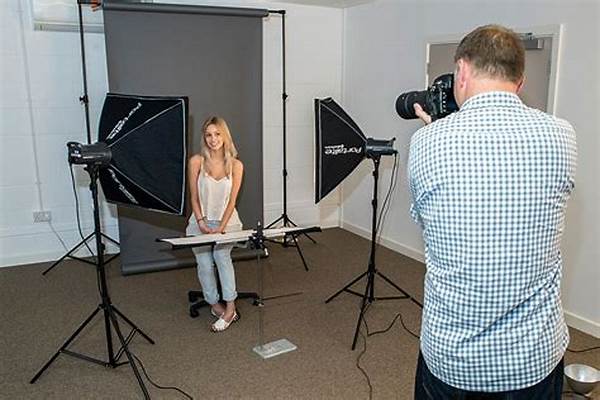So, you’ve ventured into the exciting world of wildlife photography and are determined to capture those epic shots of animals in their natural, lively states. Catching a cheetah mid-sprint or a bird in flawless flight can be a thrill like no other. But, hey, let’s face it—without the right camera settings, your amazing adventure can turn into a blurry mess! Let’s dive into the best settings you need to know to freeze those fast-paced moments perfectly.
Read Now : Comprehensive Watermarking Learning Resource
Mastering Shutter Speed for the Best Camera Settings
When dealing with active animals, the most crucial factor is undoubtedly the shutter speed. Why? Because animals move—fast! You want to freeze their motion, not end up with a blur that looks like abstract art. A good rule of thumb for the best camera settings for active animals is to start with a shutter speed of at least 1/1000th of a second. This will help keep those jumping, running, or flying creatures in sharp focus.
Another thing to consider is the light condition—ideally, natural light is your best friend. It provides more vibrant and rich colors that artificial lighting sometimes lacks. However, sometimes you might need to bump up your ISO a little, especially if the day is overcast or you’re shooting at dusk. Remember to adjust your aperture as well to maintain a balanced exposure. Keep that depth of field wide enough to ensure focus, yet narrow enough for some beautiful background bokeh. Seems like a lot? Don’t worry, practice makes perfect!
Lastly, don’t fear experimenting with continuous shooting mode. Burst shooting helps capture that perfect moment without missing a beat. Those seconds you invest in reviewing your photos afterward can mean the difference between “almost got it” and “nailed it!”
Playing with Aperture and ISO for Action Shots
Capturing the Soul of Wildlife with Technique
Getting the best camera settings for active animals doesn’t just mean technical prowess—it’s about getting into the rhythm of nature. You’ve got to feel the pulse of the surroundings and predict your subject’s next move. Immersing yourself while respecting the fauna is key. Position yourself at an appropriate distance to minimize disturbance but stay close enough to capture intimate portraits of wildlife at play.
Predictive focus, sometimes known as ‘focus tracking,’ can be your new best friend. Using predictive autofocus settings will help anticipate the beast’s movement, ensuring that your shots are sharp and captivating. It’s super helpful in uncharted territory or when an animal is darting through unpredictable terrains. How’s that for a game-changer?
What’s more, consider using a monopod or tripod. Yes, carrying extra gear can be a hassle, but that added stability can substantially improve image sharpness and reduce fatigue during long waits. Trust me, that steady shot can make all the difference in achieving the best camera settings for active animals capturing moments frozen in time.
Pro Tips to Perfect the Best Camera Settings for Active Animals
1. Early Bird Advantage: Dawn and dusk hold the magic light. Aim for these hours.
2. Lens Matters: A reliable zoom lens, ideally 70-200mm or greater, gets you those elusive close-ups.
3. Composition Awareness: Keep eyes level with your subject. Invoke interest through perspective.
4. Bokeh Love: Balance between ISO and aperture to maintain a smooth background.
5. Practice Patience: Wildlife photography isn’t a race. Sometimes waiting pays off.
6. Camera Customization: Set custom buttons for frequently used settings. It speeds up your response.
Read Now : High-resolution Portrait Smoothing
7. Silent Mode: If possible, engage silent mode. Less noise means less animal disturbance.
8. RAW and Continuous Mode: Always shoot in RAW for quality edits later, and use continuous mode to not miss a beat.
9. Weather Considerations: Don’t shy away from rain or mist—unique shots often emerge here.
10. Trial and Error: Learning by doing. Review what works, and tweak what doesn’t—it’s the journey to perfect the best camera settings for active animals.
The Road to Wildlife Photography Success
Understanding and implementing the best camera settings for active animals is just one side of the coin. The other half? It’s all about persistence and flexibility. The wilderness is unpredictable. Often, you’ll come back with empty memory cards, but each of those experiences contributes to your growth as a photographer. Don’t shy away from learning or from the elements. Approach each subject and every situation with curiosity and openness.
Often, a subtle change in your positioning or the angle of light can unveil a potentially iconic shot. Engage with your environment, and let it guide your creativity. If you can, collaborate with other wildlife photographers. It opens pathways to learning new techniques and possibly your organization’s tips tailored to specific animals or climates. Remember, while the technical side of the best camera settings for active animals forms a solid foundation, curiosity and passion will drive your real growth and innovation.
A Touch of Slang in Your Snap Journey
Yo, if you’re vibing with wildlife snaps, the best camera settings for active animals can be your secret sauce. Don’t just wing it; dial in those settings like a boss. Turn up the shutter speed; let’s freeze those beasties’ moves. ISO ain’t just a number; it’s your BFF when the light dims. Get playful with aperture, make it pop, and flaunt that ‘bokeh’ like a pro. Keep it raw, both in settings and spirit.
Sharing is caring, fam, so lean on those community buzzwords. Flex your shots, but listen up and swap tricks with fellow trailblazers. Remember, no cap, the terrain is the real deal—no insta-shots here, just patience and that split-second of magic on your terms. When it clicks (literally!), you got that fire; keep burning bright with the best camera settings for active animals.
Wrapping Up Your Wildlife Pursuit
In your journey to ace the best camera settings for active animals, patience, observation, and an experimental spirit will be your guiding stars. As you delve deeper into the art, you’ll find that the craft isn’t just about creating crisp, dynamic images. It’s about capturing and conveying unique stories, the essence, and pure vitality of the wildlife we share this planet with.
Remember, conditions won’t always be ideal. Adjust your expectations in tandem with your settings. Keep shooting, keep exploring, and most importantly, keep cherishing both the discipline and randomness of nature. Whether it’s learning from unexpected frames or celebrating that one-in-a-thousand picture, your growth as a photographer will reflect your resilience and creativity. Through the lens, you have a unique opportunity to connect others with nature. Make it count—and don’t forget, embracing the journey is as rewarding as any picture-perfect shot achieved through the best camera settings for active animals.



